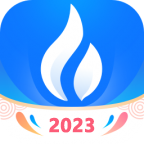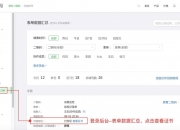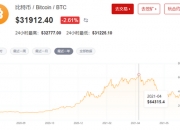全球能源互联网是指以国家电网为代表,侧重全球电力互联,利用电力网络在空间上的扩 大,将不同区域电网互联,实现不同区域不同类型新能源跨区消纳的能源互联网。
The global energy Internet refers to the energy Internet, which is represented by national grids, focuses on global electricity interconnection, uses the expansion of power grids in space, connects different regional grids, and achieves the elimination of different types of new energy across regions.
全球能源互联网是以特高压电网为骨干网架(通道)、以输送清洁能源为主导、全球互联泛在的坚强智能电网,符合两个替代(清洁替代和电能替代)的需求。全球能源互联网由跨洲、跨国骨干网架和各国各电压等级电网构成,连接“一极一道”(北极、赤道)等大型能源基地以 及各种分布式电源,能够将水能、风能、太阳能、海洋能等可再生能源输送到各类用户, 是服务范围广、配置能力强、安全可靠性高、绿色低碳的全球能源配置平台,具有网架坚 强、广泛互联、高度智能、开放互动的特征。
The global energy network, which is a backbone of super-high voltage grids (channels), a strong, globally interconnected smart grid, dominated by the delivery of clean energy, meets the needs of two alternatives (clean replacements and power replacements). The global energy network is made up of transcontinental, transnational backbone grids and voltage-level power grids in various countries, connecting large energy bases such as the “one pole” (Arctic, Equator) to a variety of distributed sources of power capable of channelling renewable energy, such as water, wind, solar and ocean energy, to a variety of users, is a global energy deployment platform with a wide range of services, high configuration, high safety and reliability, and a green low carbon, with a strong network, extensive interconnection, high intelligence and open interaction.

全球能源互联网发展框架
全球能源互联网的发展框架可以概括为一个总体布局、两个基本原则、三个发展阶段、四 个重要特征、五个主要功能。全球能源互联网将形成由跨州电网、跨国电网、国家泛在智 能电网组成,各层级电网协调发展的总体布局,坚持清洁发展和全球配置两个基本原则,经过洲内互联、跨洲互联、全球互联三个阶段,具备网架坚强、广泛互联、高度智能、开放互动四个重要特征,实现能源传输、资源配置、市场交易、产业带动和公共服务五个主要功能。
The development framework for the global energy Internet can be summarized as an overall layout, two basic principles, three stages of development, four key features, and five main functions. The global energy Internet will be composed of cross-state grids, cross-national grids, national pan-intellectual power grids, coordinated development of power grids at all levels, adhering to the two basic principles of clean development and global configuration, through the three phases of intercontinental connectivity, transcontinental connectivity, global connectivity, with four key features: a strong network, extensive interconnection, high intelligence, open interaction, and the five main functions of energy transmission, resource allocation, market trading, industry-led and public services.
能源互联网是由数量众多的分布式能源应用单元相互联结而成。由大量分布式能源构成的 能源互联网在拓扑结构上完全不同于现在的集中式供能系统。在分布式为主的能源互联网 系统中,能源供应具有更大的柔性和开放性,能源网络具有更强的自愈能力。能源互联网最大的特点是大量接入可再生能源。能源互联网通过储能设施、能量管理系统等先进技术,克服风、光等可再生能源受天气和时间影响带来的随机性和波动性问题。能源互联网利用可再生能源的方式主要是发电和热能利用。主要的一次可再生能源包括太阳能、风能、水 力、地热、海洋能及生物质等。适合于能源互联网应用的可再生能源有太阳能、风能、地热和生物质。
The energy Internet is made up of a large number of distributed energy applications that are interconnected. The energy Internet, made up of a large number of distributed energy sources, is completely different from the present centralized energy supply system. In the distributed energy Internet system, energy supplies are more soft and open, and energy networks are more self-repairable. The energy Internet is most characterized by high levels of access to renewable energy. The energy Internet overcomes the randomity and volatility of wind, light and renewable energy from weather and time, through advanced technologies such as storage facilities, energy management systems. The energy Internet uses renewable energy mainly in the form of electricity generation and thermal use.
全球能源互联网基于互联网技术应用发展背景下的清洁、高效的能源利用方式,对于提高 资源利用效率以及资源整合重组具有重要意义,是能源供给侧改革要着重解决能源供给结 构不合理、大量的煤炭消耗造成环境污染等问题的有效解决路径。
The global energy Internet, based on clean and efficient energy use in the context of the development of Internet technology applications, is important for improving resource efficiency and restructuring resource integration, and is an effective way to address energy supply side reforms that focus on issues such as the irrationality of energy supply and environmental pollution caused by large coal consumption.
缓解污染问题,增强资源利用效率。全球能源互联网依托特高压和智能电网,加快推进我国西南水电开发,大规模发展风电和太阳能发电,大力推进以电代煤、以电带油,力争提高清洁能源装机及发电量,提高清洁能源占一次能源比重。构建全球能源互联网,有利于推动能源清洁绿色发展,将具有时区差、季节差的各大洲电网联接起来, 增强资源利用效率,减少资源浪费和产能过剩,使得要素有效投入,进而加强供给管理。
The global energy network, based on the Totot high-pressure and smart power grid, accelerates the development of hydropower in the south-west of the country, large-scale development of wind and solar power generation, and vigorously promotes the use of electric coal, electric-coated oil, with a view to increasing the amount of clean energy installed and generated and increasing the share of clean energy in primary energy. The construction of the global energy Internet is conducive to the promotion of clean and green energy development, linking power grids across continents with time and seasons, increasing resource efficiency, reducing waste of resources and excess capacity, leading to effective input of elements, thereby enhancing supply management.
化解产能过剩,推进资源整合重组。电能是最清洁高效的能源,全球能源互联网的构建便以电能为核心,未来的能源开发、转换、配置、使用的基本平台是电网,清洁主导、电为中心是能源发展的必然趋势。这一理念有效促进了我国对煤炭等传统行业进 行资源整合、企业重组,着力对其去产能、去库存、去杠杆、降成本、补短板,全力推动供给侧结构性改革。
Electricity is the most clean and efficient source of energy, and the global energy Internet is built around electricity. The basic platform for future energy development, conversion, configuration, and use is the grid, with clean-up taking the lead and electricity being the inevitable trend in energy development.
优化能源系统,拓宽改革思路。全球能源互联网的用户思维就是指将“用户至上”渗透到能源供给的各个环节,增强产品、服务以及用户体验。全球能源互联网的构建将现有的由生产者控制的集中式能源系统转变成为与消费者互动的集中式与分布式能源结合的网络,重视用户需求,解决用户用能难题,提供系统的能源解决方案。在大 数据处理方面,利用先进的技术对能源种类、能源消费以及用户习惯等进行数据采集、 分析,为能源的多方交易提供数据互动,提升能源的生产和使用效率。
Optimizing energy systems and broadening ideas for reform. The global energy Internet’s user thinking refers to penetrating “user-to-user” into energy supply links, enhancing products, services, and user experiences. The global energy Internet is built to transform existing centralized energy systems controlled by producers into centralized and distributed energy networks that interact with consumers, focus on user needs, solve user-use challenges, and provide systematic energy solutions. In large-scale data processing, using advanced technologies for data collection, analysis, and data interaction for multiple trades in energy, increasing energy production and use efficiency.
分布式能源:能源互联网的天然区块链
Distributed Energy: The Natural Block Chain of the Energy Internet
分布式能源通常是布置在用户所在地,耦合连接到区域电力系统的发电设施,包含可再生 能源系统、热电联产系统、工业能量回收利用系统,并具有需求侧管理功能。分布式能源 已成功实现商业化利用,并且是综合效率最高的一种利用方式,能效可达 80%以上,且输配电损耗显著降低,能有效降低电网崩溃的概率,提高供电可靠性。分布式能源技术主要包括往微型燃气轮机、工业燃气轮机、热电联产系统、光伏、风力涡轮系统、燃料电池等。 其中燃料电池的发电效率将可能达到 80%,是未来最具有发展价值的技术。这些技术将和智能控制与优化技术、综合系统优化技术等集成起来,一起成为能源互联网的核心技术。
Distributed energy is usually deployed in user locations, coupled with power generation facilities connected to regional power systems, containing renewable energy systems, heat and power cogeneration systems, industrial energy recovery systems, and demand-side management functions. Distributed energy has been successfully commercialized and is one of the most efficient uses, with energy efficiency exceeding 80% and power consumption significantly reduced, power transmission and distribution losses effectively reducing the probability of power grid collapse and increasing the reliability of electricity supply. Distributed energy technologies include, inter alia, mini-gas turbines, industrial gas turbines, thermal cogeneration systems, photovoltaics, wind turbine systems, fuel cells, etc.
目前,分布式能源在天然气和光伏发电领域已经取得快速发展。2015年天然气分布式能源 在我国开始加速发展,共建成 127个项目,装机 1405.5兆瓦。预计到 2020年,我国规模 以上城市均使用分布式能源系统,装机容量达到 4000万~5000万千瓦。我国天然气分布 式能源发展有进一步加速的趋势。到 2020 年,我国燃气轮机将实现自主研制及应用,系统集成能力也得到大幅度提升。由于天然气分布式调峰能力强、运行稳定,与太阳能光伏、 太阳能光热、地源热泵等互补的分布式能源系统将得到大力发展。中国从 2010 年开始加大对可再生能源的投资和补贴力度,大力的政策支持使中国成为太阳能发电增长最快的国家。2015 年我国已为装机容量世界第一的国家。在最新的“十三五”能源规划中,分布式光伏成为国家未来几年扶持的重点。结合天然气分布式能源的发展,两者优势的互相结合 将形成我国分布式能源的新特征。
At present, distributed energy has been growing rapidly in the area of natural gas and photovoltaic power generation. In 2015, gas distribution energy began to grow faster, with 127 projects installed and 1405.5 megawatts installed. It is expected that, by 2020, more than our size, distributed energy systems will be used, with installed capacity ranging from 40 million to 50 million kilowatts.
分布式发电是用清洁能源、生物质、新能源、可再生能源等为一次能源,将规模不一的发电、供热等设备加以集成,以分散的方式布置在用户附近的能源系统,相当于一个可独立输出热、电等能源的多功能小电站。开展分布式发电市场交易需要遵循信息对等、共享、透明,交易分散等基本原则。而区块链技术本身是一个特殊的数据库结构,因为具备去中 心化、可以分散等特点,在分布式发电市场交易上将非常有效。
Distributed power generation is a primary energy source, using clean energy, biomass, new energy, renewable energy, etc., which integrates equipment of varying sizes, such as electricity generation, heating, etc., into a decentralized energy system located close to the user, equivalent to a small multi-purpose power station that can independently export energy such as heat, electricity, etc. The market for distributed power generation needs to follow the basic principles of information parity, sharing, transparency, and fragmentation.
区块链技术优势:去中心化的能源系统
能源行业应用区块链技术的目标是提供一种完全去中心化的能源系统,能源供应合同可以 直接在生产者和消费者之间传达。区块链技术有助于加强个人消费者和生产者的市场影响 力,这也使消费者直接拥有购买和销售能源的高度自主权。区块链技术能源领域显示出强 大的应用潜力,除了可以执行能源供应交易外,区块链技术还可以提供计量,计费和结算流程的基础。
The objective of the application of block chain technologies in the energy sector is to provide a completely decentralised energy system, where energy supply contracts can be communicated directly between producers and consumers. Block chain technologies help to strengthen the market impact of individual consumers and producers, which also gives consumers a direct high degree of autonomy in the purchase and sale of energy.
区块链技术同能源互联网概念有较强的内在一致性,智能合约得以实现无人化智能能源互 联网。从本质上来看,能源互联网同区块链技术都必须构建于普遍的智能设备物联网之上, 设备的普遍智能化和互联化将和能源互联网的发展互为表里。而区块链技术同样强调价值 网络参与主体的物联化和智能化,基于区块链的智能合约,其作用并不是仅仅如其字面所 显示的,只能实现实体或者数字资产交换功能,其实智能合约的真正作用在于基于区块链 的不可篡改和集体共识特征,预先写入的代码可以在无人干预或者少人干预的情况,直接 调用区块链上数据,执行所有可以计算的逻辑功能并输出和执行结果,因此,智能合约的真正意义其实是为区块链上各主体间的互动提供了智能化的规则,并且可以在无人参与的情况下,实现各种复杂逻辑功能,这种特征称之为图灵完备。从这个角度上来看,能源互联网的智能设备网络如果要实现完全的无人化智能,恐怕不可能离开区块链技术的帮助,尤其是布置在区块链上的智能合约技术。
In essence, the energy Internet and the technology of the block chain must be built on a universal network of smart devices, where the general intelligence and interconnection of the equipment will be interlocking with the development of the energy Internet. And the technology of the block chain equally emphasizes the value where the network's participating subjects are connected and exported and executed, based on intelligent contracts that do not merely provide intellectual rules for the interaction of the block chain among the constituent elements, but only for the exchange of physical or digital assets, the true role of the smart contract is that it is based on the inexorable and collective consensual character of the block chain, which can be described as a feature.

区块链对能源互联网实现
在能源互联网的应用上,区块链主要具有以下技术优势:
has the following main technical advantages in the application of the energy Internet:
分布式能源交易和供应体系。金融领域的获得的区块链技术应用经验可以应用于能源领域。区块链技术能够支持去中心化的能源供应系统。这将有助于简化多层系统,其中电力生产商、配电系统运营商、传输系统运营商和供应商,通过区块链网络直接将生产者与消费者联系在各个层次上进行交易。
Block-chain technology can support decentralised energy supply systems. This will help to simplify multilayered systems in which producers, distribution system operators, transmission system operators and suppliers directly link producers and consumers at various levels through a network of block-chains.
能源管理部门的区块链智能合约。在区块链技术和智能合约的帮助下,可以有效地控制能源网络。智能合约将向系统发出信号,制定如何启动交易的规则。此类流程将基于智能合约的预定义规则,可以确保所有的能量和存储流都是自动控制的。这有助于平衡供给和需求。例如,当产生比需求更多的能量时,智能合约可以确保这些多余的 能量被自动地传送到存储器中。
A block chain smart contract for energy management. With the help of block chain technology and smart contracts, energy networks can be effectively controlled. Smart contracts will signal the system and establish rules on how to start a transaction. Such processes will be based on predefined rules for smart contracts, which will ensure that all energy and storage flows are automatically controlled. This will help balance supply and demand. For example, when generating more energy than is needed, smart contracts will ensure that these excess energy is automatically transferred to storage units.
能源流的安全储存。将所有能源交易数据分散的存储在一个区块链上将有可能保持所有能量流和业务活动的分布式和安全记录。由智能合约控制的能量和交易流可以以防 篡改的方式记录在区块链上。因此,分布式能源市场的逐步数字化,为区块链技术提 供了创新开发和新商业模式的难得的机遇。
Safe storage of energy flows. The decentralized storage of all energy trade data on a block chain will make it possible to maintain distribution and security records of all energy flows and operations. Energy and trade flows controlled by smart contracts can be recorded on the block chain in a way that prevents manipulation.

原标题:区块链技术:带来能源供给结构改革的新曙光
注册有任何问题请添加 微信:MVIP619 拉你进入群

打开微信扫一扫
添加客服
进入交流群



















发表评论